As the reality of climate change becomes ever more visible, more and more gardeners are looking into drought-tolerant landscaping. Bamboo probably isn’t the first thing that comes to mind. Cactus, succulents and sagebrush may be likelier candidates. But bamboo requires less water than most people think, and some species of bamboo are more drought-tolerant than others.
Bamboo needs an ample supply of water to get started, but once the rhizome root system gets established, bamboo can survive with limited irrigation. Some varieties require more water than others, but certain species of bamboo are quite drought-tolerant. It’s an extraordinarily resilient plant with nearly 2,000 species and cultivars that can grow in a vast range of conditions.
In the following article — first published in April 2021 and most recently updated in May 2024 — we’ll take a closer look at the watering requirements of bamboo in general. And then we’ll examine a few of the more drought-tolerant species in particular.
Watering bamboo
It’s a common misconception that bamboo grows well in swamps and rice paddies. The truth is that most bamboo requires very well-drained soil. In fact, over-watering poses a greater risk to bamboo than under-watering.
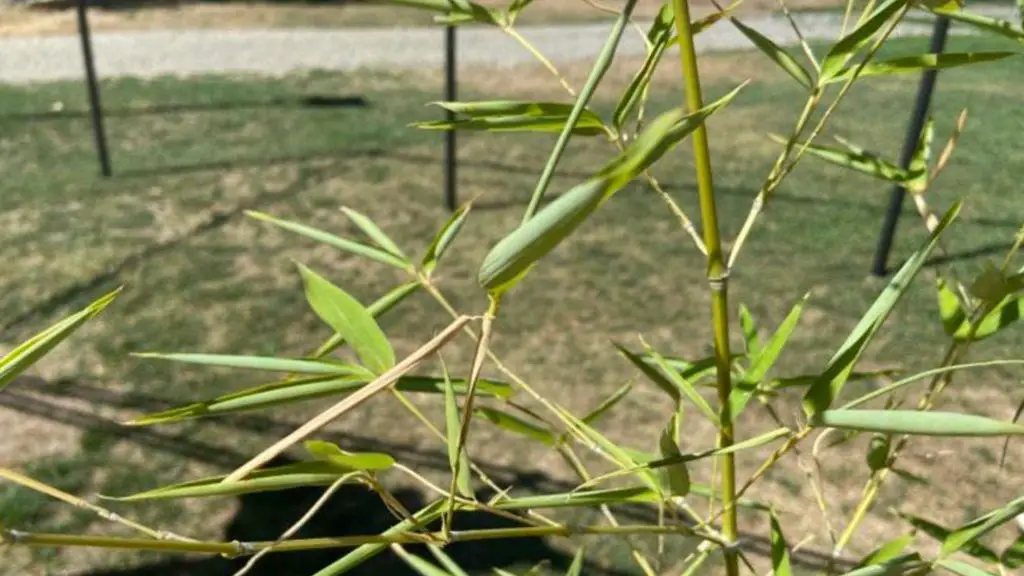
Over-watering vs under-watering
Submerged in water or saturated soil, bamboo rhizomes will get soggy and start to rot. Once the rhizomes have rotted, that’s the end for the bamboo. The rhizomes network is like the central nervous system, and if it drowns, the plant is essentially brain dead.
There are just a handful of bamboo species that are more adaptable to wet soil, but even those varieties will die if the soil remains saturated for several days. So before we get to the drought-tolerant bamboo, here are a few “flood-friendly” species that can handle the wettest soil conditions.
- Incense Bamboo (Phyllostachys atrovaginata)
- Macon River Bamboo (Arundinaria gigantea ‘Macon’)
- Red Margin Bamboo (Phyllostachys rubromarginata)
- Water Bamboo (Phyllostachys heteroclada)
- Bambusa vulgaris for tropical climates
If a bamboo plant gets too little water, on the other hand, the first thing to go will be the leaves. In this way, the plant will try to consolidate its life force into the most important area. Like I said earlier, that would be underground in the roots and rhizomes.
If the plant continues to be deprived of water, then it will eventually die, but that could take months. In most cases, a bamboo plant that appears to have died from under-watering will actually be in something like a state of hibernation. If you cut back all the dead culms and begin to give it regular water, the plant will probably come back to life. Within a matter of weeks, there’s a good chance that new shoots will start sprouting up.
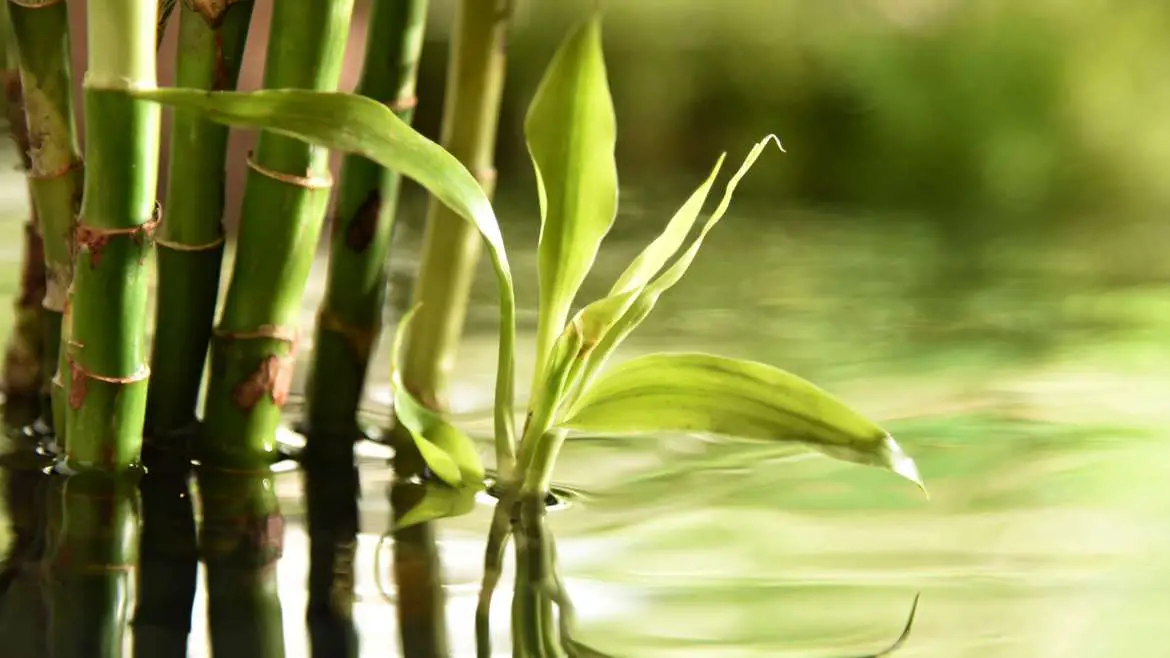
I wouldn’t recommend putting your bamboo through such a stressful experiment like this. But if you have some bamboo that looks like it died of neglect, I wouldn’t give up on it right away. Unless it’s in a pot, in which case it will dry out and die a lot quicker than bamboo in the ground. (See below.)
The ideal watering schedule for bamboo
There are a lot of types of bamboo out there, and watering needs will vary. But generally speaking, your bamboo will be pretty happy if it gets watered once or twice a week. In the heat of summer, you may have to water it three times a week. Ideally, bamboo likes somewhat moist but never soggy soil.
To help the roots of a bamboo plant retain moisture, it’s a good idea to spread some mulch around the base. Bamboo does a fairly good job of producing its own mulch, regularly dropping leaves. (This mostly happens in the spring and often confuses novice bamboo growers to think their plant needs water.) It helps to add more mulch, in the form of leaves or wood chips. Not only will this layer help the soil hold moisture, but it also provides great insulation during cold winters.
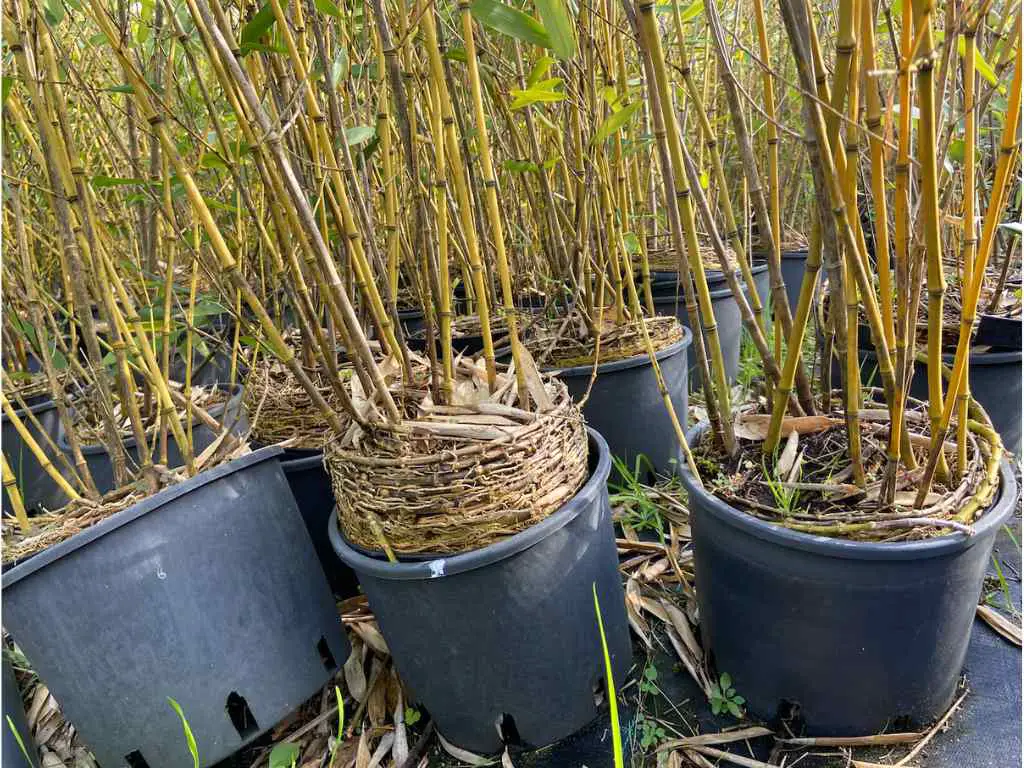
Watering potted bamboo
Many gardeners prefer to keep their bamboo in a pot. It looks pretty this way and it’s easier to move them around your garden. But potted bamboo will be more sensitive, especially in terms of watering. Bamboo roots are shallow, but they can fill a pot quickly. That leaves little space for soil, and without a lot of soil, there’s no way to hold moisture.
Bamboo is much happier in the ground, where the roots have room to stretch and the earth can stay moist. So if your bamboo is in a pot, it will probably need water 2 or 3 times a week. Maybe even every day in the summer. And if it’s a heatwave, you might be better off moving your potted bamboo into the shade.
Just be sure the pot or container has good drainage, and that the water is passing through the pot. The last thing you want is for the pot to get waterlogged. And sometimes the roots can get so crowded that the water just rolls off the top without penetrating the soil. In that case, it’s time to transplant. This involves breaking the rootball into multiple specimens and putting them into new pots with fresh soil.
Drought-tolerant bamboo species
In general, bamboo prefers to stay somewhat moist most of the time. But there are several species that are better suited for longer dry spells.
TROPICAL CLUMPERS

Bambusa blumeana: Thorny culms make this an unpopular species for ornamental use, but it’s extremely robust and very drought-tolerant. So much so, that there is a campaign currently underway to plant swaths of B. blumeana along the southern borders of the Sahara Desert and the Sahel region.
Bambusa multiplex ‘Alphonse Karr’: Another popular species of ornamental bamboo with bright yellow canes and very beautiful green striping. Dense clumps get 20-30 feet high with slender poles about 1 inch thick.
Bambusa malingensis ‘Seabreeze’: This popular species from Southern China is great in a variety of conditions. As the name suggests, it’s very tolerant of winds and salty air by the seaside. Its tight clumping habit and lateral branches also make for a dense and fast-growing privacy hedge, often growing up 30 feet tall or more. Seabreeze also happens to be one of the more drought-tolerant bamboo species. But like most varieties of Bambusa, it’s not especially cold-hardy. Temperatures below 20º F will usually result in frost damage.
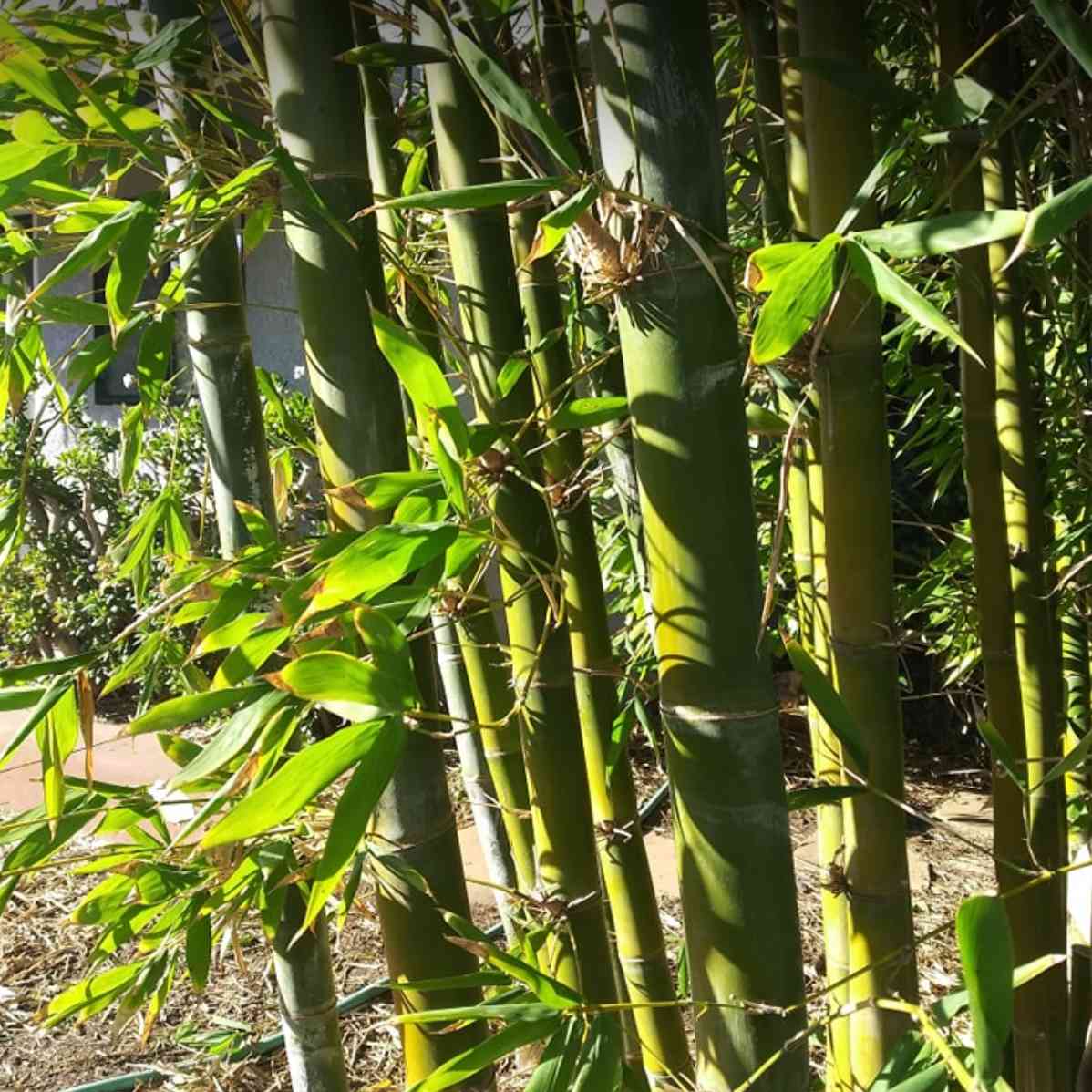
Bambusa oldhamii: One of the most popular species of ornamental bamboo. In favorable conditions, this giant clumper can get about 60 feet tall with 4″ diameter culms. Thick culm walls make it a good species for construction too.
Bambusa vulgaris ‘Vittata’, or Bambusa striata: An unusually attractive species, with mostly yellow culms and irregular green stripes. The poles can grow to about 30-40 feet tall and up to 3 or 4 inches wide, with thick culm walls. In addition to being drought-tolerant, this species is also very flood-tolerant. As long as the temperatures don’t go below freezing, this tropical variety can survive almost anything.
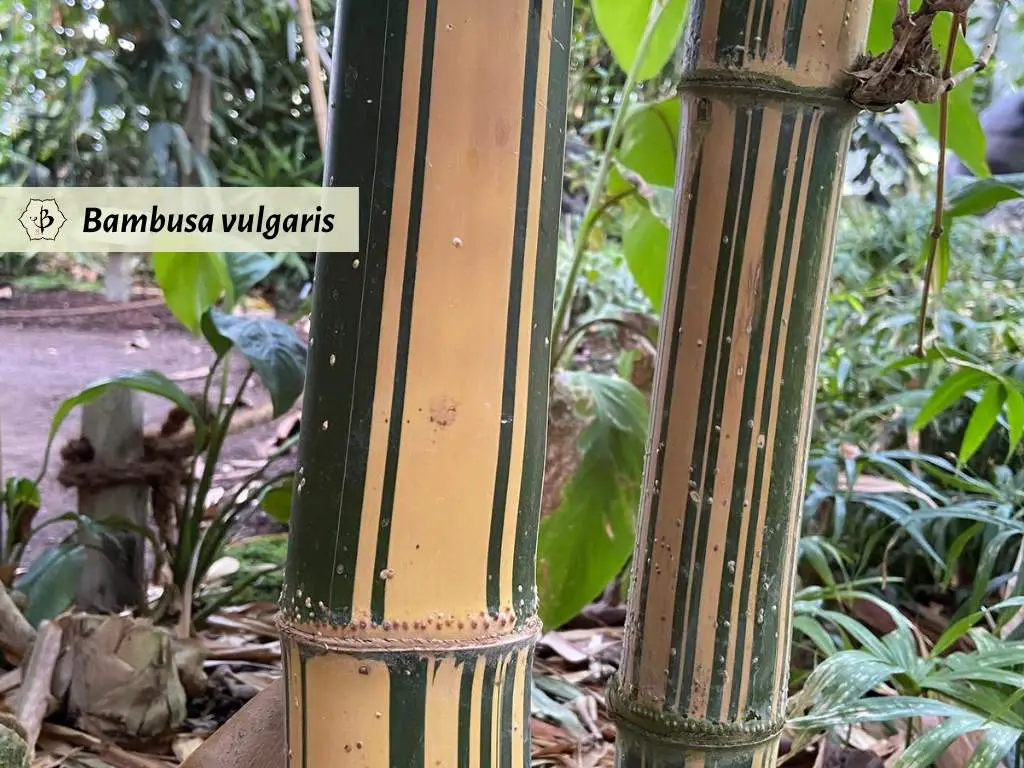
Chusquea culeou: Belonging to a somewhat exotic bamboo genus from Chile, this species is accustomed to very hot and very cold temperatures and limited amounts of precipitation. It can tolerate summer heat in the triple digits, and unlike most clumping bamboos, C. culeou is cold-hardy to about 0º F. Chusquea bamboos are also interesting for their nearly solid culms, which are excellent for building. Elegant poles take on a nice color (see picture below) and grow about 10-20 feet tall, and about 1 inch in diameter.

Dendrocalamus strictus: A giant variety of timber bamboo, native to northeast India and Southeast Asia. It grows in thick clumps and needs warm weather. Culms can grow 50 to 60 feet tall and 3 to 4 inches in diameter. Also called Male Bamboo, Calcutta Bamboo, or Iron Bamboo, this variety is a great biomass producer because the culm walls are very thick, and sometimes the culms are solid, especially near the base. Culms are more likely to be solid in dry conditions when the plant is deprived of water.
Take a look at this Dendrocalamus strictus specimen on YouTube.
Otatea acuminata: Also known as Mexican Weeping Bamboo, and native to the warmer climates. This species grows in dense clumps with slender culms and delicate foliage that sways nicely in the breeze. Native to Mexico, many varieties of Otatea tend to be fairly drought tolerant.
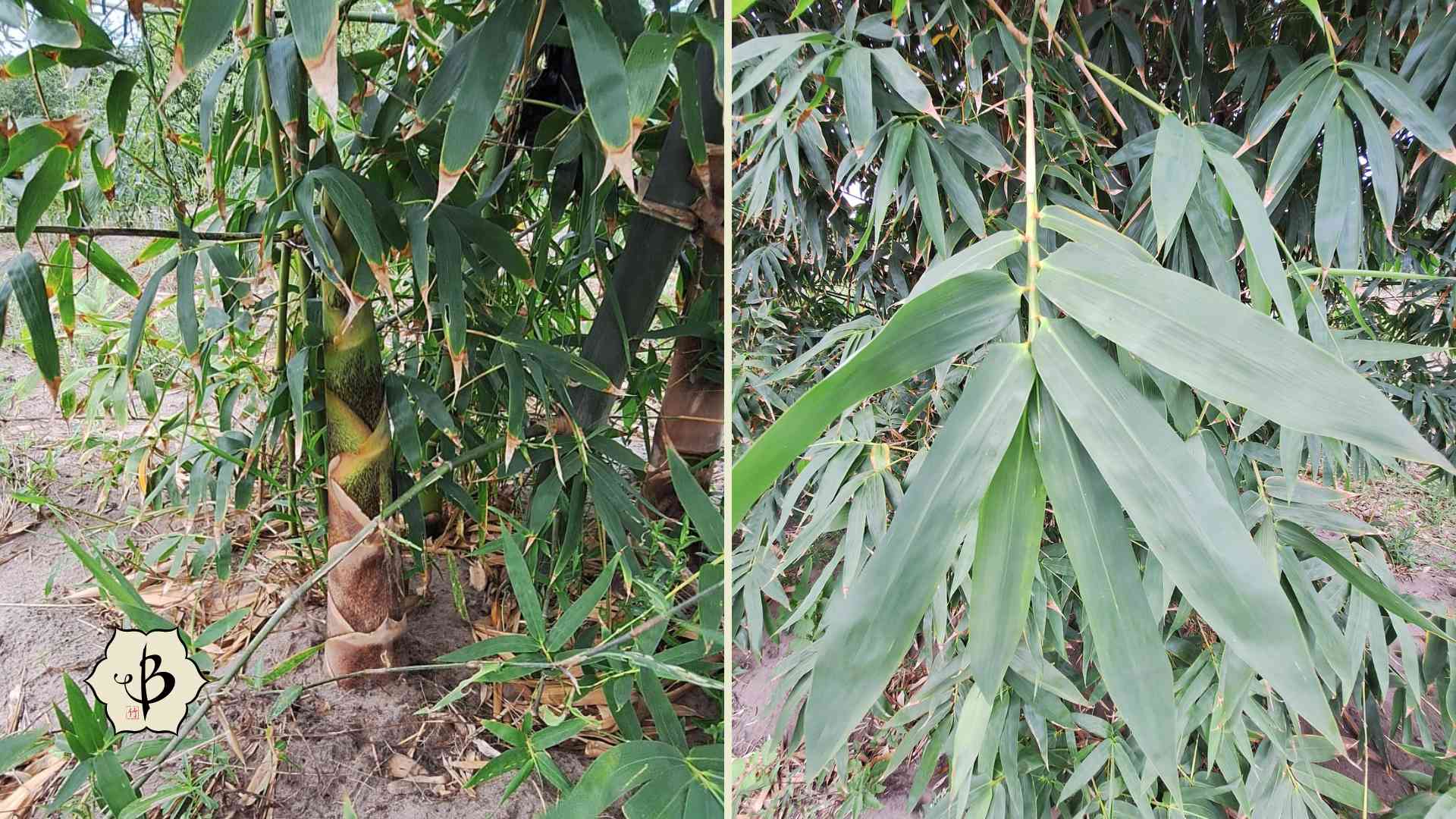
Oxytenanthera abyssinica: Native to Africa, this species is widespread in Ethiopia, Kenya and South Africa. It’s not an easy species to find at your nursery, but it’s an ideal choice for dry, desert-like climates. Among its most interesting characteristics are the solid poles, which make this bamboo very suitable for furniture making and light construction.
TEMPERATE RUNNERS
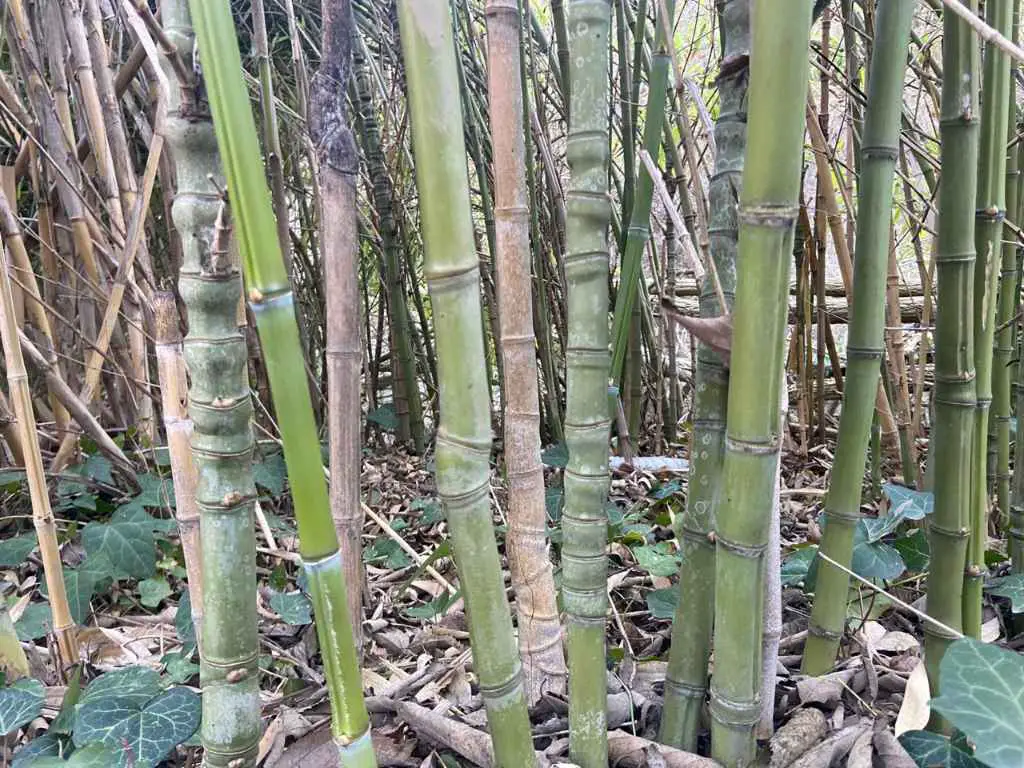
Phyllostachys aurea: Golden Bamboo, as it’s often called, is one of the most widespread species of all. One reason for that is its resiliency. This species can survive almost anything, including a drought. It also has attractive, upright culms and dense but delicate foliage.
Phyllostachys mannii ‘Decora’: A beautiful variety of medium-sized running bamboo native to southern China and India. It’s accustomed to hot weather and doesn’t require a lot of water.
Phyllostachys nigra: Black Bamboo is another of the most popular species of bamboo. Partly that’s due to its beautiful culms that turn almost black as they mature. P. nigra is also very adaptable to extreme weather including freezing and drought. It’s hardy down to at least 0º F.
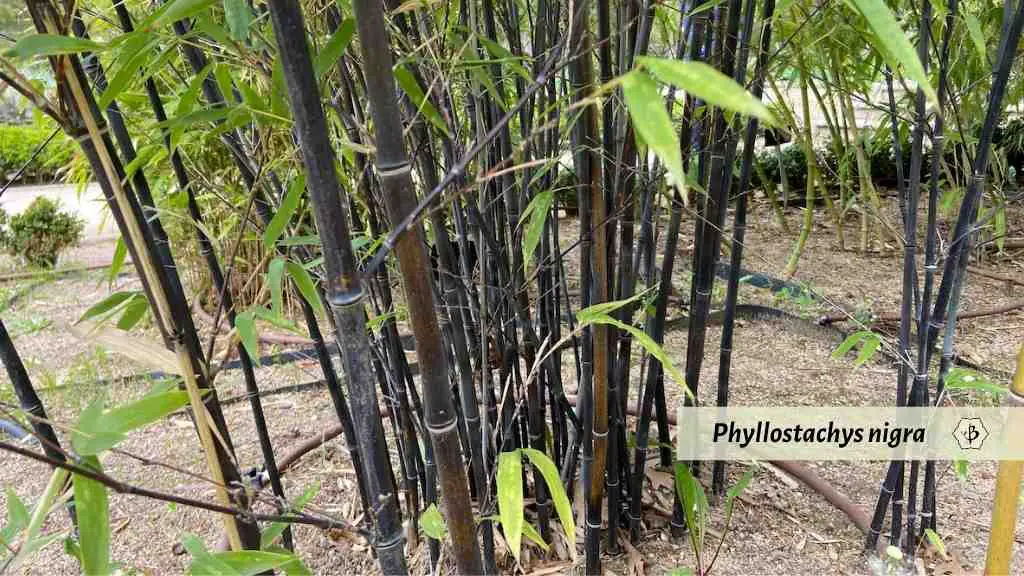
Phyllostachys nigra ‘Henon’: A subspecies of Black bamboo, Henon is a marvelous variety of timber bamboo that easily grows 50 or 60 feet tall with 4 to 5-inch culms. As a Phyllostachys, this running bamboo is quite cold-hardy, but it’s also very tolerant of droughts and high temperatures.
Phyllostachys vivax: Similar to Henon in size and appearance, Vivax is not as good as a building material, but it’s one of the most heat- and drought-tolerant species of timber bamboo available.

Least drought-tolerant bamboo
Before we end, we should mention a few kinds of bamboo that are definitely not drought-tolerant. Most species of Chimonobambusa prefer to have very regular watering, and they will languish without it. This includes the popular Square Bamboo and Walking Stick Bamboo. Pseudosasa japonica, or Arrow Bamboo, is a great choice of ornamental bamboo for home gardens. They are shade-friendly and do well in pots, but are not drought-tolerant.
Further reading
If this article about drought-tolerant bamboo was interesting, you may want to comb through more of our encyclopedic archives to learn more about the wonderful world of bamboo.
- Growing bamboo at the Salton Sea
- Bamboo in ponds and wetlands
- 3 Ways of propagating bamboo
- Growing bamboo in the shade
- 9 Bamboo species to place in pots
FEATURE IMAGE: Oxytenanthera abyssinica, or African lowland bamboo, grows well in the dry Sahel region of Nigeria.

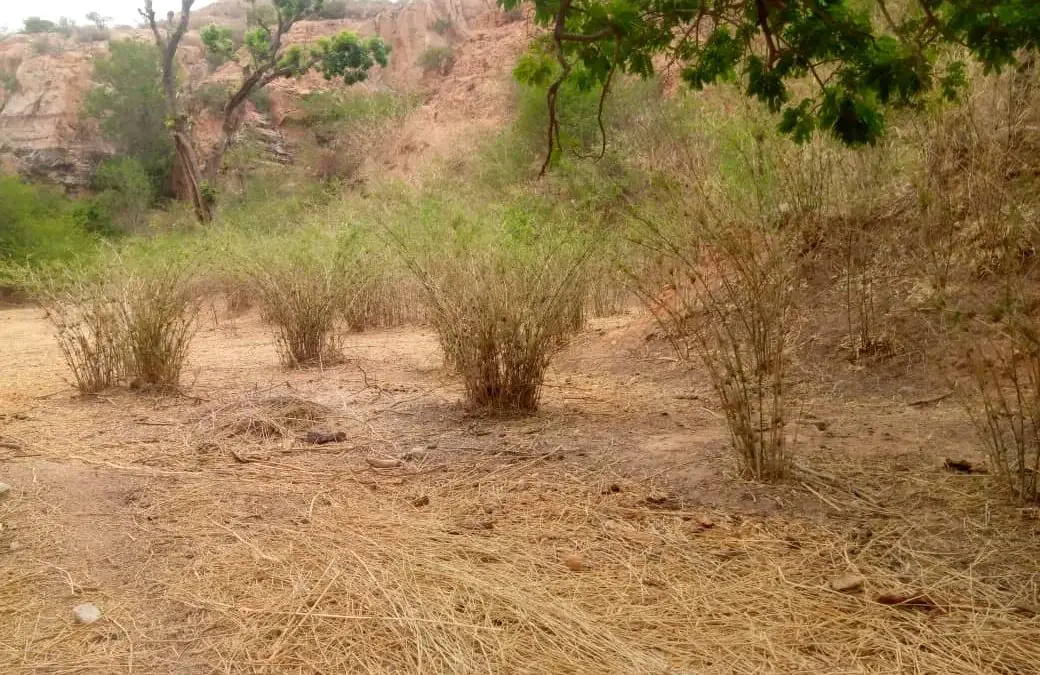
























Hi there, my name is Jason and I am the owner of a small nursery in Hoedspruit,S outh Africa. This is a very small, very hot town near the Kruger National Park.
We are about to move premises which is next to a very busy road. This is not a peaceful spot where tranquility can be found.
So I’d like to hear from you what you think I should use to make a tall sound barrier which can withstand up to 40c heat and not too much water.
I’m looking at bamboo as opposed to Casuarina lines which are popular amongst the surrounding citrus and mango farms. I think it is sustainable and can be used for some very fun projects.
Thanks for your time!
Jason
I think Oxytenanthera abyssinica will be best, but Bambusa balcooa and Dendrocalamus strictus are also good option.
Good article . Very useful in the context of diversification of bamboo integration to wide range of ecosystems across the globe.